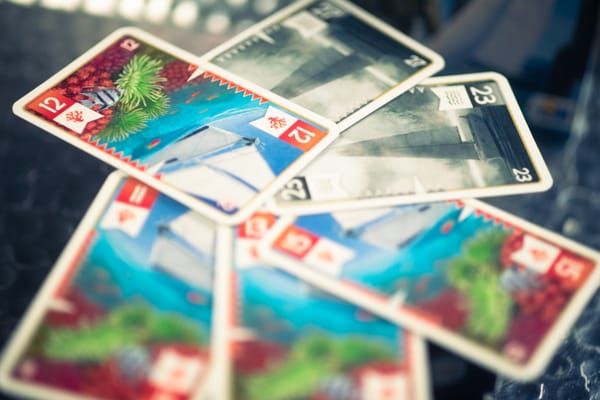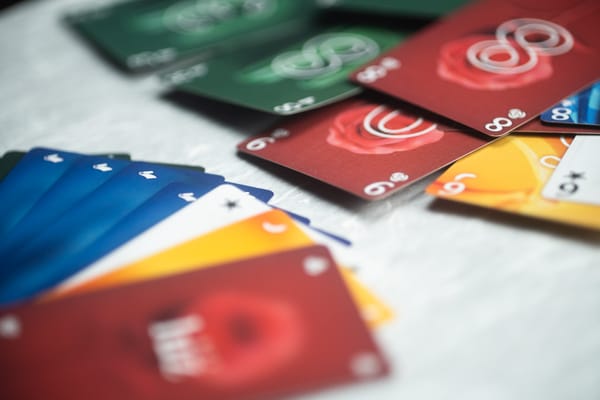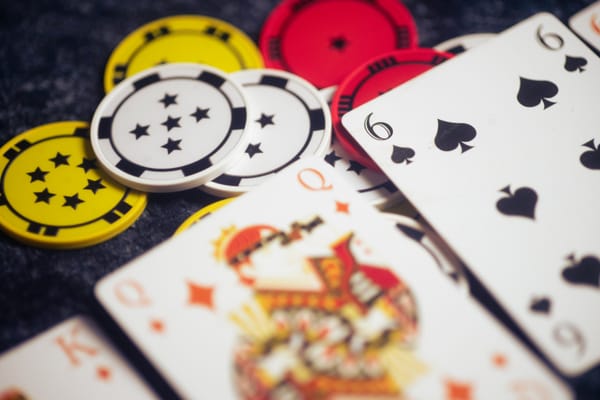Great board games for six players
When your game night expands, there are still plenty of great games to play.
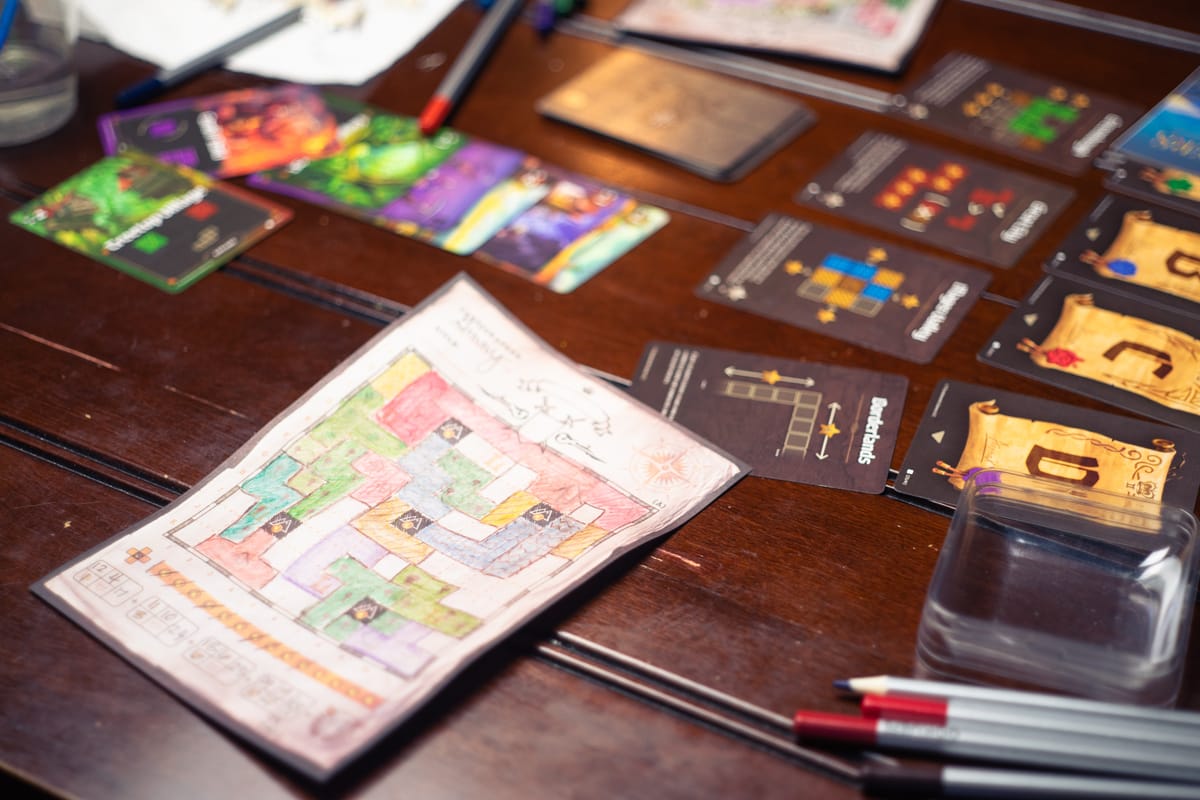
When I think about games that support six players, I typically think about party games, and then I think about games that support six players but maybe unnecessarily. As an example, I remember games of Catan (Teuber, 1995) with the 5–6 player extension, and I remember them never being amazing. Instead, they felt crowded and a little beyond what we were looking for in a game. And not that long ago, I played a six-player game of Scythe (Stegmaier, 2016), and that probably took four hours and involved a lot of waiting between turns. (Would it have been different with six experienced players? Absolutely. Everyone had played at least once, though.) I’m pretty sure I did it with a game of Root (Wehrle, 2018), too, which was, uh, not recommended. We’ve all made these choices, and while I wouldn’t trade any of them, I’m now a little more cautious about the games I pull out when I know we’ve got six players at the table.
A key example: Last week, we were planning to attend a six-player game night, and as I hadn’t played board games with several of the folks but understood they were into board games on varying levels, getting a good mix of options was important. Cue the first entrant, Bacon (Ross, 2022).
Bacon: Six-player climbing/shedding
There aren’t many trick-taking games (in the broader sense of trick-taking, in which climbing-shedding games are members — not the more specific term of art. Anyway, let’s move on. That’s a tangent for another day.) that support six players, and few of them are great. Seas of Strife (Major, 2016) is a great trick-taker, and it shines with higher player counts. I know Mü (Matthaus and Nestel, 1995) is supposed to be good at higher player-counts, but I’ve only played it at four.
But none of those games is as perfect at six players as Bacon. In Bacon, you have a wide range of melds you can make. Combinations range from a single card to the vaunted ‘plate’ — two sequential sets of triples, and Specials are more boutique — quads, quints, straight and stretch flushes, and the near-impossible hex. But making all of these a little easier to achieve are your two Bacon cards, which you get at the start of the round. These are wild cards that are everyone will know you have, so they add an air of caution to each meld played.
The best thing about Bacon: At six players, you’re playing in two teams of three. The partnership play is boosted by being able to pass to either of your teammates after you win a trick, and figuring out how to support your teammates with a timely pass is such a valuable tool.
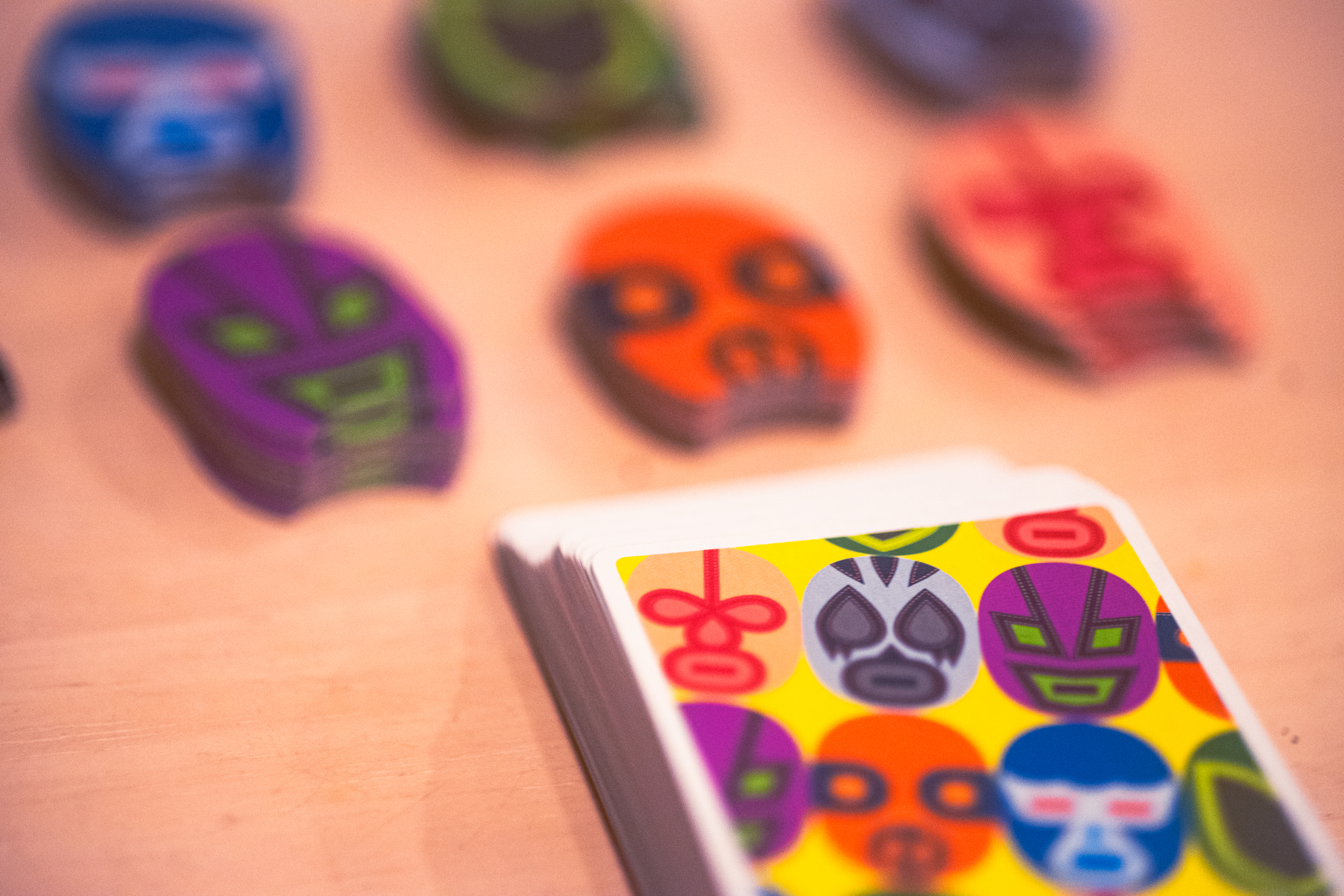
Five more six-player trick-taking/climbing games, aside from the aforementioned games:
- Maskmen (Sasaki & Shinzawa, 2016) is a climbing game with suits and no values — the whole game is precipitated on assigning value to these masked luchador-style wrestlers.
- Five Three Five (Kabuki, 2020) is a climbing game where you can add to other players’ melds, and where runs are worth more at lower ranks than higher ranks.
- Nanatoridori (Arao, 2023) is a climbing game where you form simple sets of cards, but you can’t rearrange your hand, and you can pick up cards and add them when you beat a meld
- Rebel Princess (Byrne, Guerrero, Peláez and Virgos, 2023) is a more chaotic spin on the traditional card game Hearts, but with special powers and different conditions each round.
- Tournament at Camelot (Boginski, Boginski-Barbessi and Shannon, 2017) is chaotic (in goods ways!) at six, and that was a good time, but perhaps more chaotic than you’re looking for in a game. You tell me.

Heat: Pedal to the Metal (and Flamme Rouge)
If a meatier game is on order, Heat: Pedal to the Metal (Granerud and Pedersen, 2022) is an excellent choice. It’s got a little bit of deck-building to it, but the real joy comes in the auto racing theme and how it plays out. In fact, the ‘building’ part of the game is largely just you adding negative cards to your deck. Hmm. Definitions, right?
Essentially in Heat, each player is simultaneously selecting, then revealing, one or more cards from their hand, which will determine how fast you move on the track. As you shift gears, you’ll play more or fewer cards, but you have to be cautious around corners: Go too fast and you’ll spin out of control. If you manage to keep up with the pack, you’ll even get the benefit of slip-streaming behind them, giving yourself an added boost.
Heat: Pedal to the Metal is designed by Asger Harding Granerud and Daniel Skjold Pedersen, and illustrated by Vincent Detroit. It was published in the U.S. by Days of Wonder.
Heat: Pedal to the Metal is a sequel to the already-excellent Flamme Rouge (Granerud, 2016), which simulates the famous bicycle races of scenic Europe. There’s a bit mechanically that separates the two, but the big piece is that you’re not worried about gears. You’re instead playing two racers, a Rouleur and a Sprinteur, which I understand are actual racing roles. (I have a friend who loves the Tour de France. I watched a little bit one year. Not a lot, mind you. Just enough to really get that Flamme Rouge has a fun realism to it.) You’ll want to move your team of racers such that your Sprinteur finishes with a burst of speed, getting away from the pack.
Flamme Rouge is, I think, my preference among these two games, but if you want to play it with six, you’ll need an expansion. Am I breaking my own rule here? Perhaps, but it’s a great game.
Flamme Rouge is designed by Asger Harding Granerud and illustrated by Ossi Hiekkala and Jere Kasanen. It was most recently published in the U.S. by Stronghold Games.
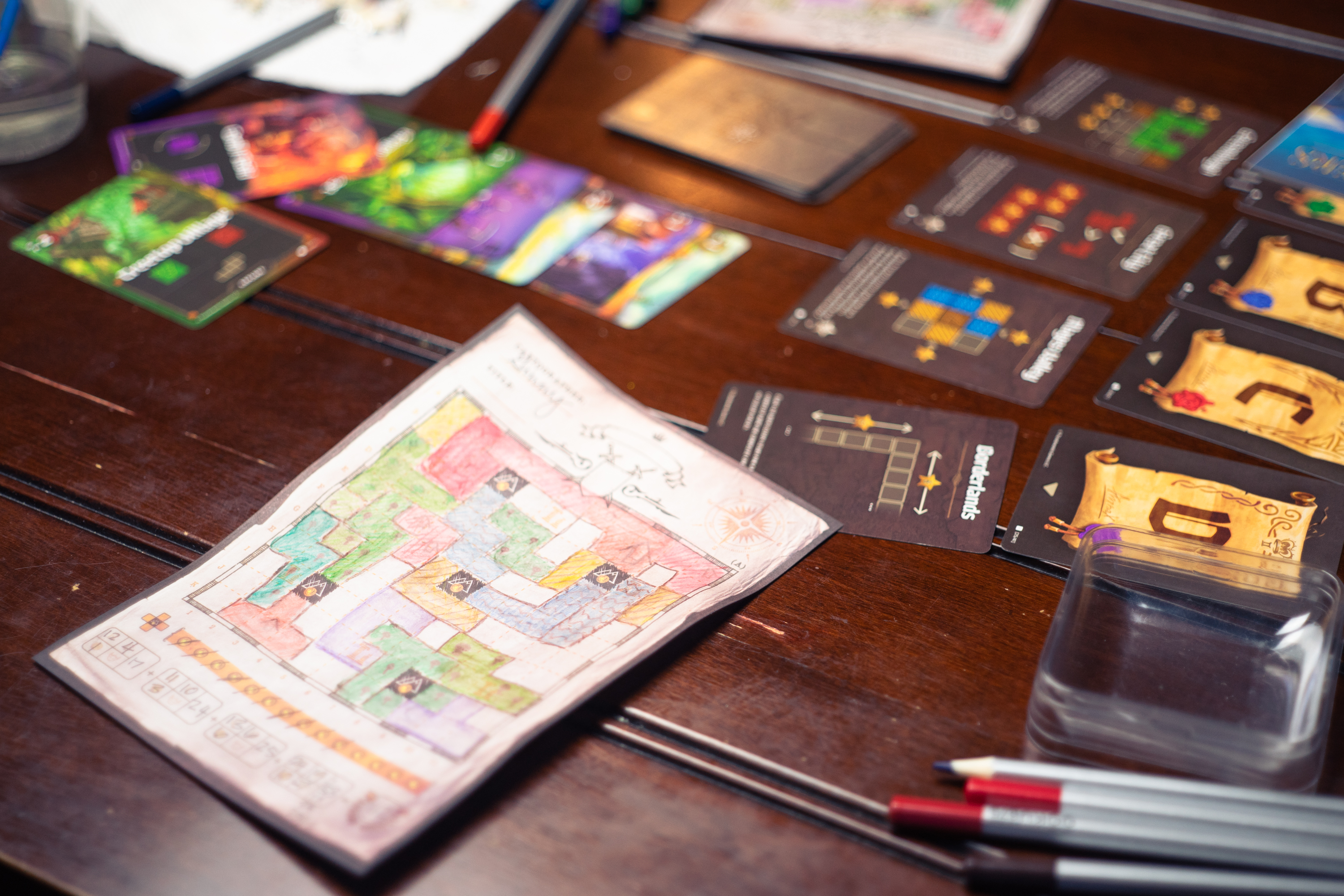
Cartographers, Welcome To… and other roll-and-write games
There are so many great roll-and-write games that have no technical player limit, just your imagination. And your friend group. And I guess your patience for explaining rules to a large number of people at once, but if you’re trying to play a game with 100 people, that’s already a necessity. At any rate, these games are great roll-and-write games. Turns are generally played simultaneously, so you’re not going to sit around and wait too often.
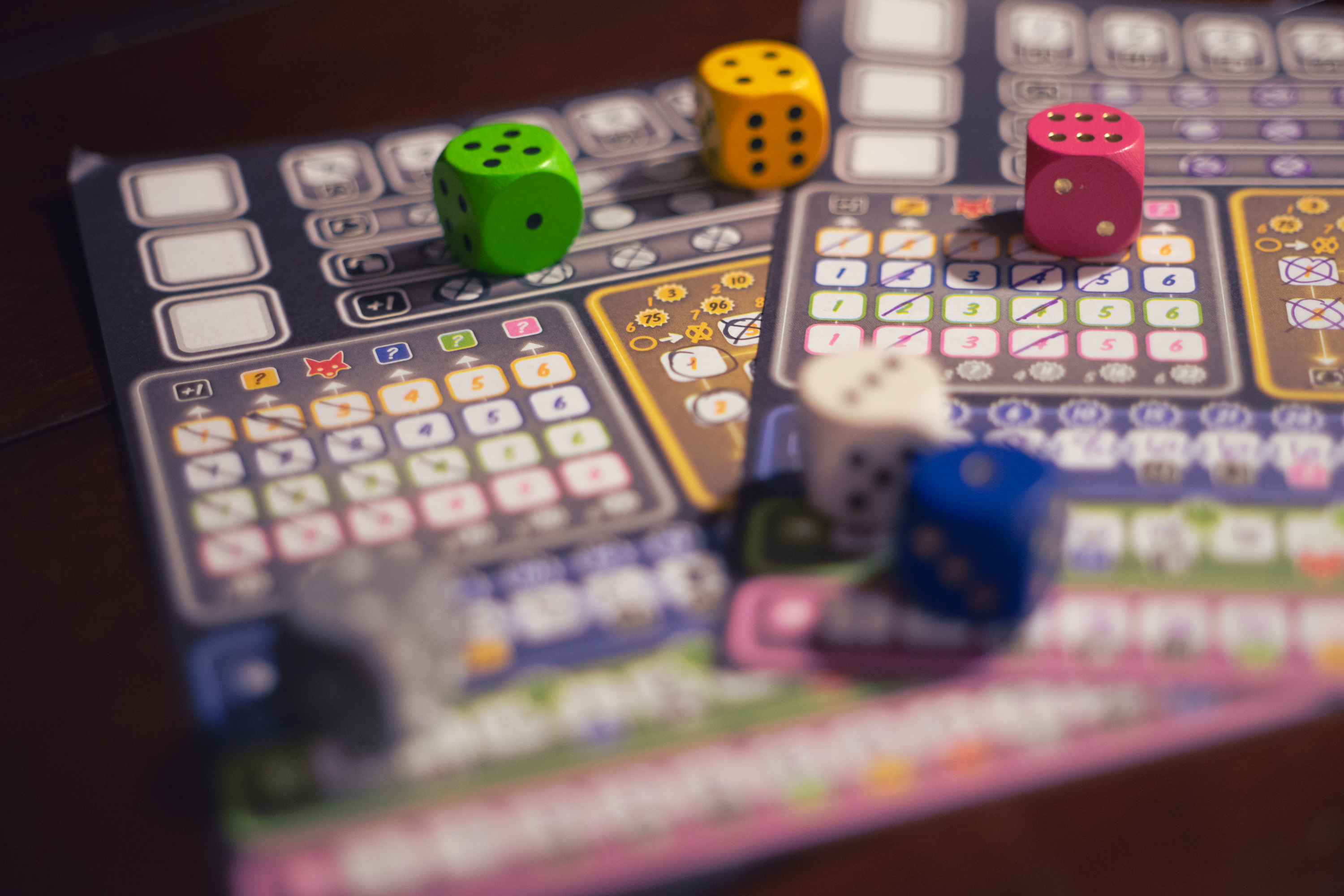
Cartographers (Adan, 2019) takes the act of map-making and turns it into a game of discovery. And a game of trying to make Tetris-style pieces fit just right on said map, really. You’ll be drawing a card for the table each turn, and that must be drawn on players’ maps. Sometimes, you’ll encounter an enemy, and that really just means you get to draw on your neighbor’s map for a turn, and it’ll hurt them. Outside of that single opposing element, this is really a game against yourself, and that’s just fine by me, especially as you can talk through the whole thing without any real trouble.
Welcome To… (Turpin, 2018) is about building a little neighborhood, but as you do so, you’ll have to plan ahead, because no two houses can share the same number. It’s a bit like real life, but instead of having to find actual solutions for these built houses, you just sort of shrug. “I guess I won’t get points there” is fine, but “I guess nobody can live here” is maybe not. I wonder what they do in those circumstances. Hmm.
Railroad Ink (Hach and Silva, 2018) has you drawing roads and railroads on your board, connecting exits at specific edges of a grid to earn lots of points. This game gets really cool when you bring out the varied expansion dice, but it’s not strictly necessary: You’ll have a great time with the base game, too.
On Tour (DeShon, 2019) is a network-building game about sending a band on tour across the United States or Europe — or even just New York or Paris, in the standalone sequel. You’ll roll dice, which determines where you can write your numbers on the map, but you’ll be trying to form an optimal path with lots of numbers in sequential (but not necessarily consecutive) order. You can’t just jet across the country when planning your tour, as you’re probably in a cramped van with some friends from high school.
Three quick-playing card games for six players
No Thanks! (Gimmler, 2004) is a push-your-luck game that changes with every new group. Your willingness to risk racking up lots of points could pay dividends, but it equally might land you at the bottom of the heap. That risk-averse quality will differ from player to player, and navigating that dynamic with your own will keep you on your toes. Plus, it’s dead-simple to teach, which means you can easily drop this one in your bag and be confident in your ability to get it to the table, should nothing else fit the bill.
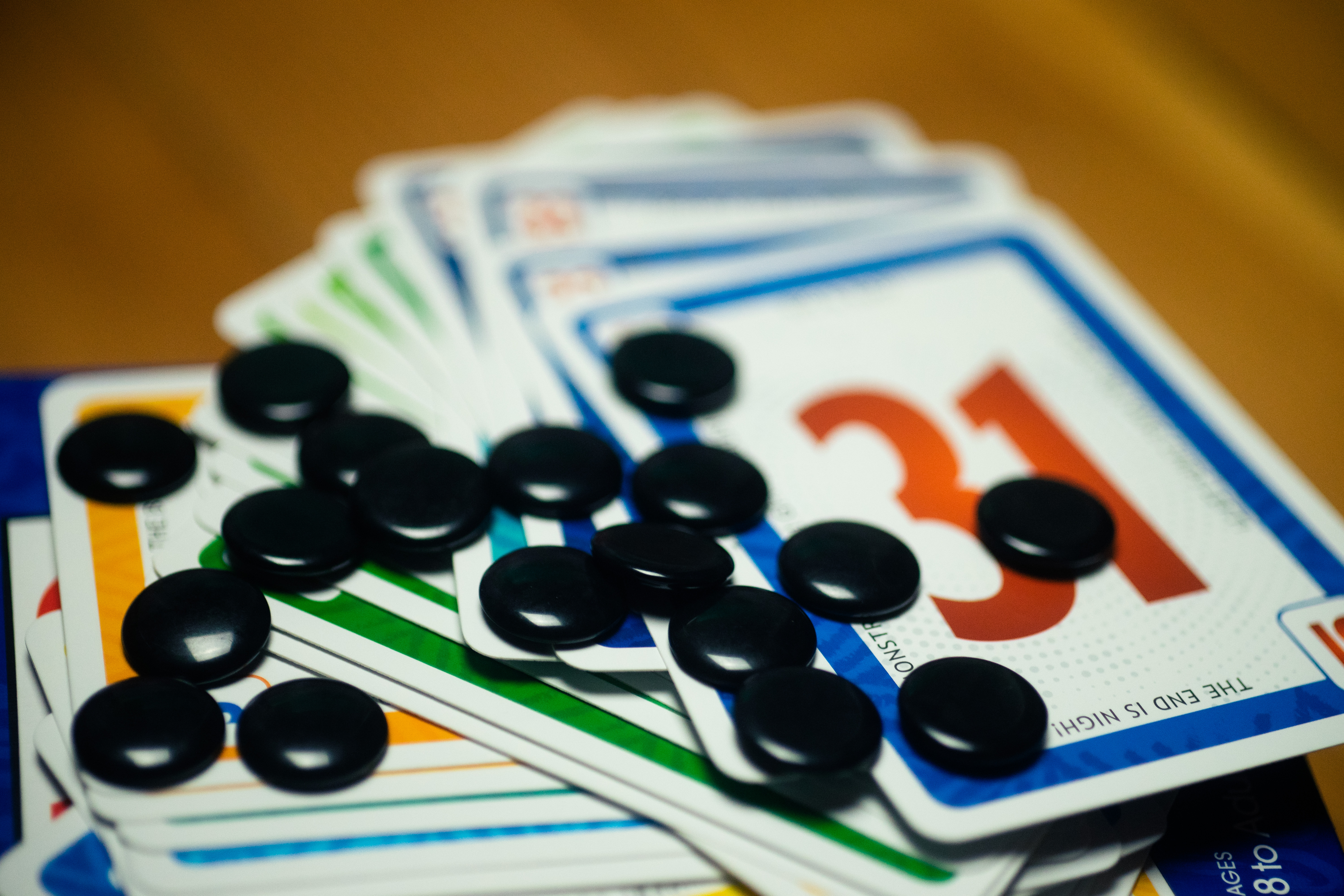
6 Nimmt / Take 5 (Kramer, 1994) is all about taking risks with your card placement. The game’s pretty simple: There are five rows of cards, each of which starts with a number drawn from a deck that runs from 1 to 104. On your turn, you’re all going to simultaneously choose a card to place in one of those rows, with the lowest card going first. If there’s not a spot where you can play your card sequentially higher than another row (placing in the row to which your number is closest), then you’ll have to clear a row, taking those cards at points, and start the row anew with your number. Points are bad.
Point Salad (Johnson, Melvin and Stankewich, 2019) is a quick-playing card game in which your turn consists of either taking a single card as a point-scoring schema, or taking two cards as vegetables (or fruit — tomatoes and bell peppers are absolutely fruit, sorry to say) for your tableau. That decision usually comes pretty quickly, though you’ll quickly find that trying to plan in a six-player game based on what’s available after your turn is just not going to work in your favor.
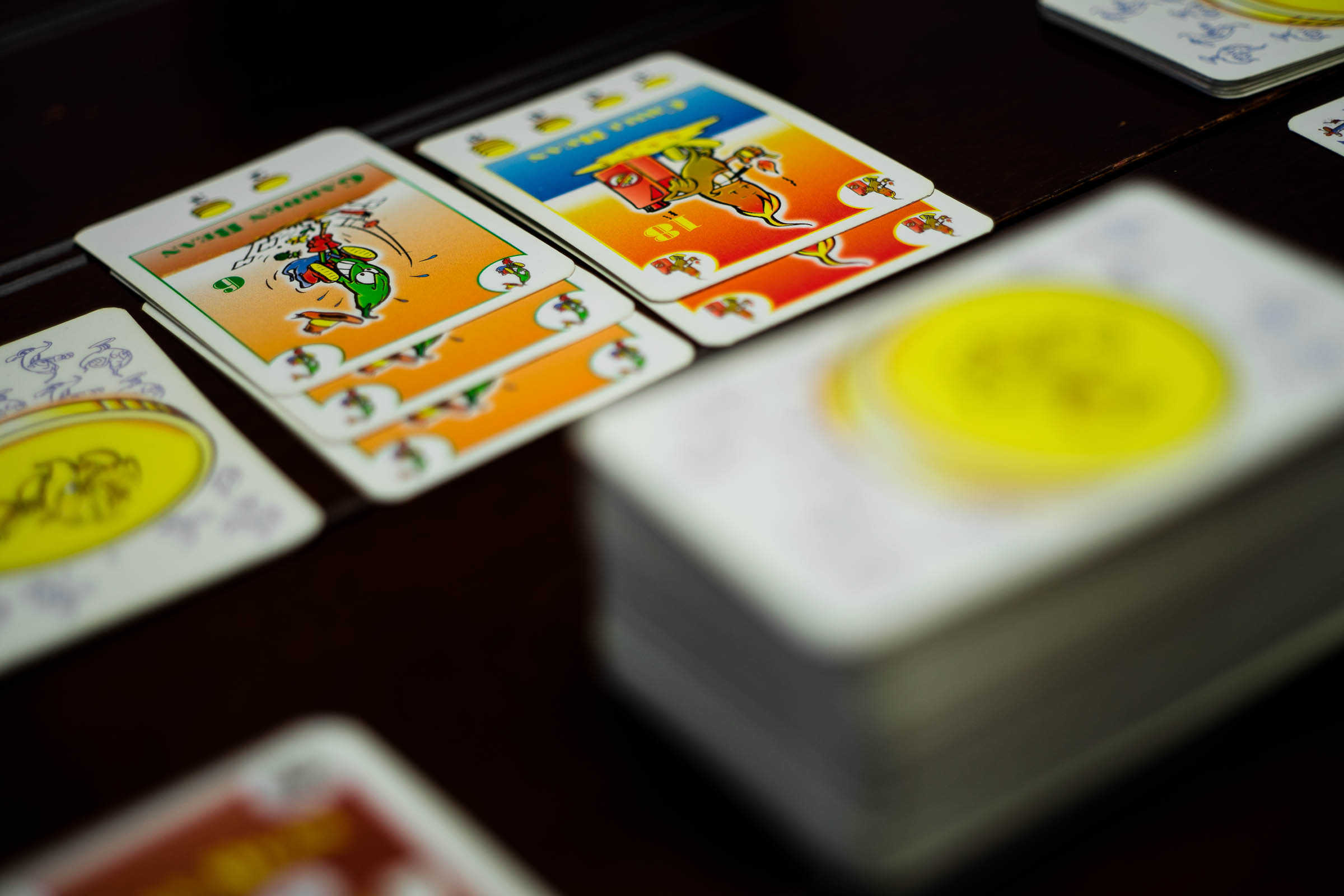
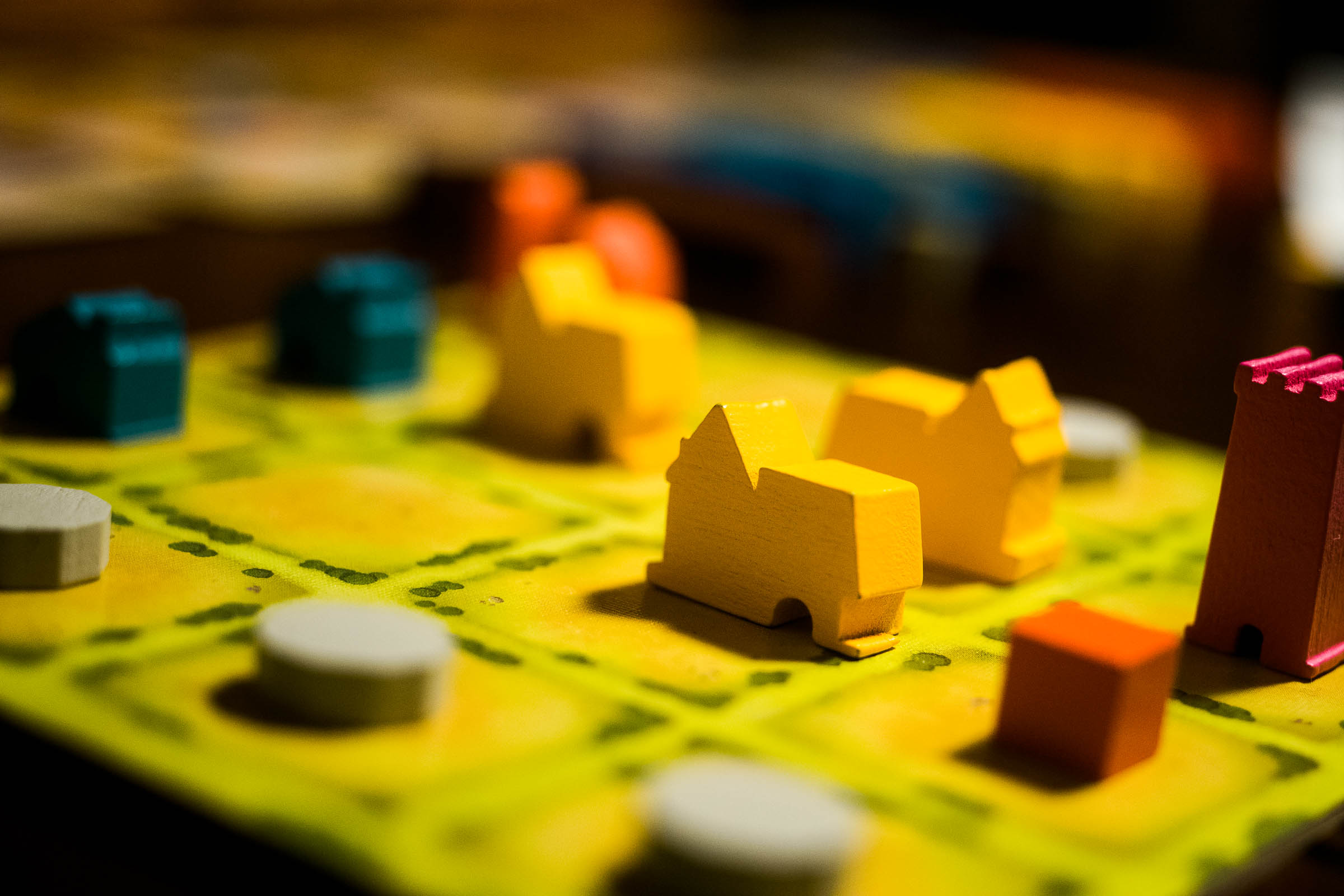
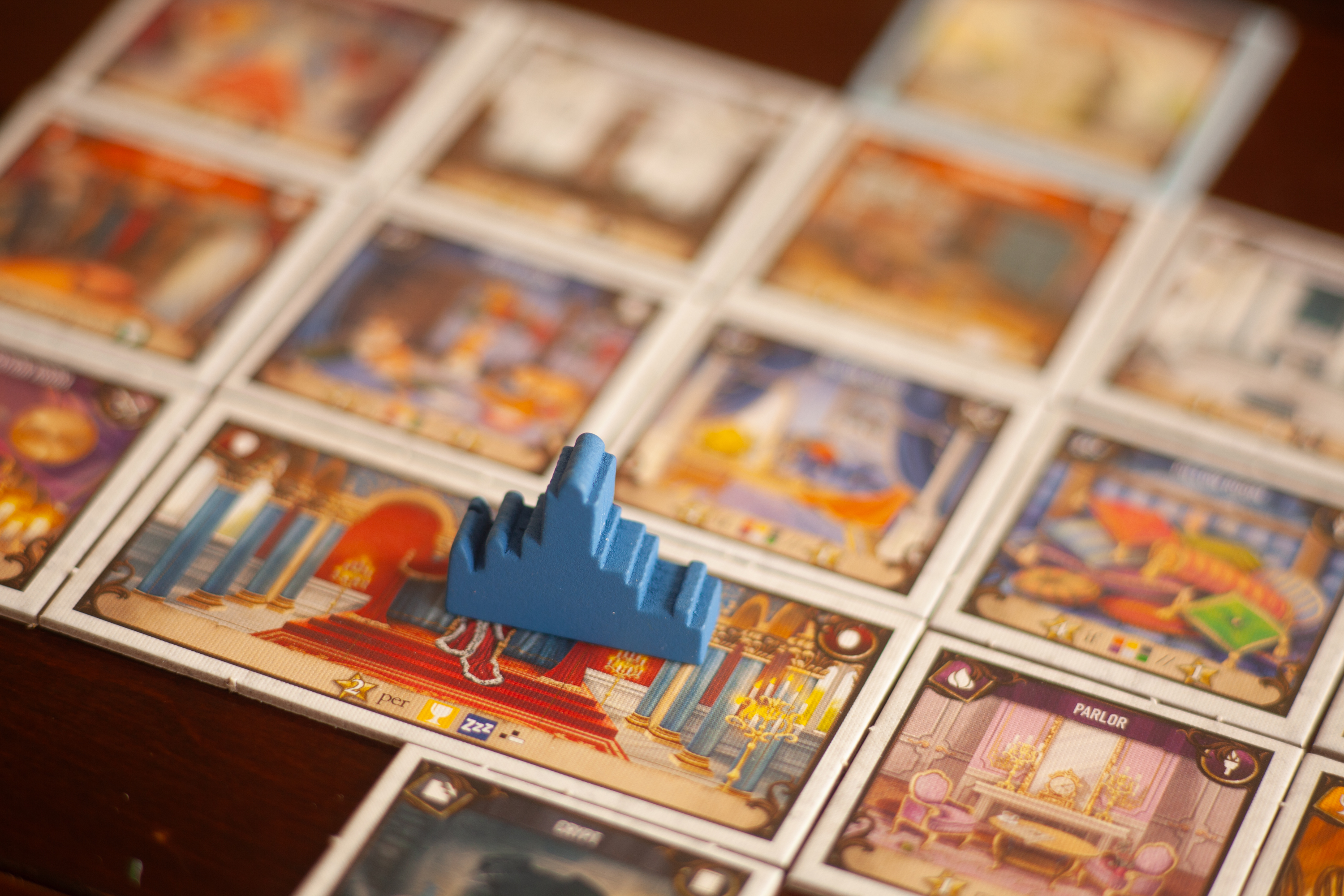

Bohnanza, Tiny Towns, Between Two Castles of Mad King Ludwig, and The Gang
Five more games to consider
- Bohnanza (Rosenberg, 1997) is one of the great games for six players. It’s a negotiation game about planting beans. I love it. Still, it can take quite a while, so if that’s a concern, give it some thought.
- 7 Wonders (Bauza, 2010) may not be the latest hotness in drafting, but it supports seven players pretty well, and the newer editions make icons at least a little more legible.
- Tiny Towns (McPherson, 2019) is an abstract strategy game where you’re building a little city. (A town, you might say.) The player who determines what resource will be built each turn rotates. It’s a neat little thing.
- Between Two Castles of Mad King Ludwig (O’Malley and Rosset, 2018) and its predecessor, Between Two Cities (2015), are great games in which you’re building with both of your neighbors. Your score is determined by the lowest of your two construction projects.
- The Gang (Cooper and Heath, 2024) is cooperative poker, really, but I’ve got to warn you: It gets quite a bit harder with more players. If your group loves poker, give it a try. If they’re not into it — maybe save this for a smaller game night.
Thanks for reading Don't Eat the Meeples! Subscribe for free to receive new posts and support my work.




